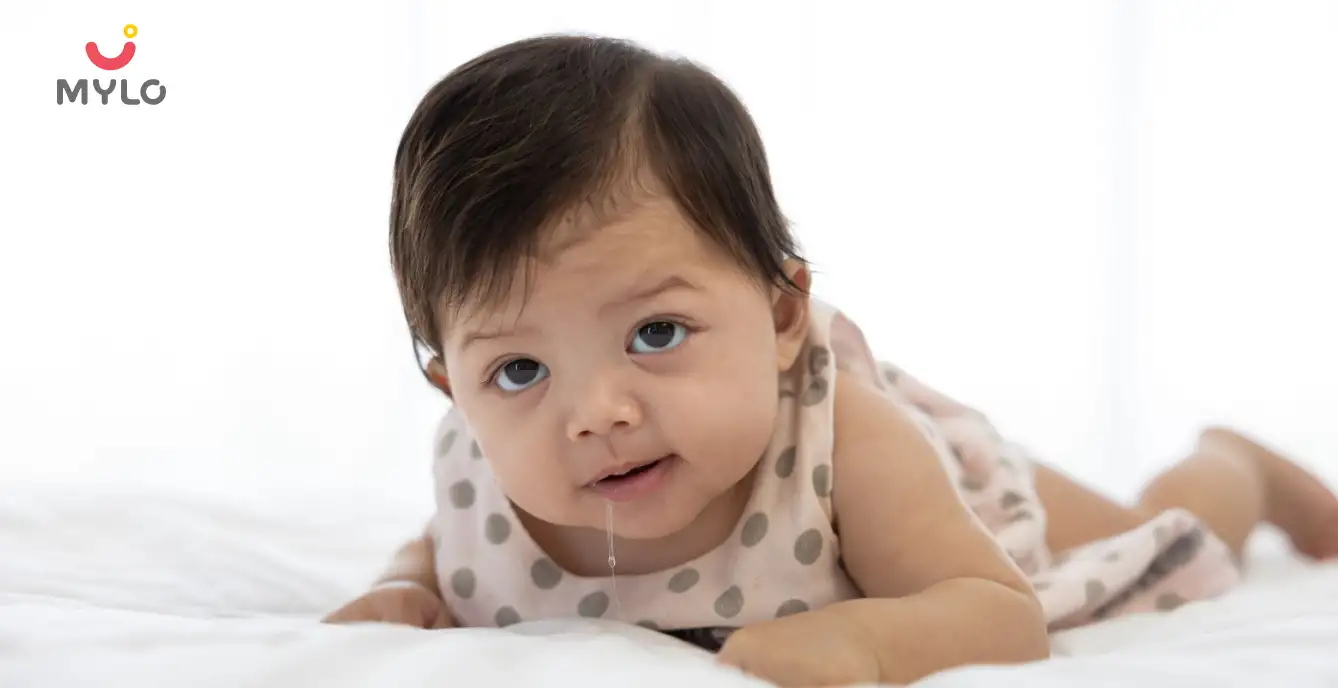Home

Diapering

Cloth Diapering Basics: 5 Best Practices to Follow While Changing Your Baby’s Cloth Diaper
In this Article

Diapering
Cloth Diapering Basics: 5 Best Practices to Follow While Changing Your Baby’s Cloth Diaper
Updated on 12 July 2023



Medically Reviewed by
Kusum Sabharwal
Obstetrician & Gynecologist - MBBS| DGO
View Profile

Cloth diapering has become increasingly popular among parents as a sustainable and cost-effective alternative to disposable diapers. However, for new parents, cloth diapering can be intimidating and overwhelming. In this article, we will provide some cloth diapering basics and the best practices to follow while changing your baby's cloth diaper. These tips will help make cloth diapering a breeze and ensure your baby stays comfortable and dry.
What You Need to Know Before You Begin Cloth Diapering?
Before you begin cloth diapering for your baby, here are 5 things you must know:
-
Cloth diapers are made of natural fabrics and feature a waterproof cover or outer layer and an absorbent insert or inner layer. They can be washed and reused multiple times.
-
Types of cloth diapers include flats, prefolds, fitted, contours, pockets, all-in-ones, all-in-twos, and hybrids.
-
The number of diapers needed depends on your baby's age and frequency of laundry, with washing every 3-4 days being recommended.
-
Using cloth diapers is not much different than using a disposable diaper. They just require pre-assembly of the inserts or outer cover. For some options, you can just snap the buttons or Velcro to adjust the size according to your little one.
-
Cloth diapers may leak occasionally, especially if they are not changed frequently enough. So, make sure to follow the best practices for changing cloth diapers.
You may also like: Cloth Diapers Vs. Disposable Diapers: Pros and Cons
Cloth Diapering Basics: Best Practices for Changing Cloth Diapers
Let us now understand some easy steps on how to change a cloth diaper.
1. Gather your supplies
You will need a clean cloth diaper, baby wipes, cloth diaper inserts, diaper cream, and a changing mat or waterproof sheet to change your baby's diaper.
2. Remove the dirty diaper
Unfasten the diaper and lift your baby's legs up by their ankles. Use the front of the diaper to wipe away any solids and dispose of it appropriately.
3. Clean your baby
Use baby wipes to clean your baby's bottom thoroughly. Be sure to get into all the creases and folds.
4. Apply diaper cream
If necessary, apply diaper rash cream to your baby's bottom to prevent diaper rash or soothe any irritation and redness.
5. Put on a clean diaper
Take out the dirty insert and place a fresh insert in your baby’s cloth diaper from the rear end. Adjust the size of the diaper according to your baby so that it fits comfortably. Snap the diaper using easy buttons around your baby's waist.
Alternatively, you can invest in Mylo’s Happy Bums Combo, which will provide you with all the essentials you’ll need while changing your baby’s cloth diaper. The Happy Bums Combo comes with a reusable cloth diaper, cloth diaper inserts and gentle baby wipes. It’s all you and your little one need for a smooth diapering experience.
Troubleshooting Common Cloth Diapering Issues
Now that you’re familiar with the cloth diapering basics, let us understand some common issues that may arise with cloth diapers including leaks, fit, washing, expense, complexity, and travel and how to troubleshoot them:
1. Leakage
The most common cause of leaks is improper fit, so it's essential to check the fit first and ensure there are no leg gaps, waist gaps, or belly gaps. To prevent fitting issues, choosing quality diapers that fit and accompanying them with tutorials is recommended.
2. Washing
Washing cloth diapers can be challenging. To avoid washing problems with cloth diapers, use baby laundry detergent, rinse them in cold water, wash them in hot water and rinse at last in cold water.
3. Stain removal
To remove any stains from your baby’s cloth diapers, it’s important to wash and dry them properly. For drying cloth diapers, just put them on a clothesline that receives ample sunlight. It will accelerate the drying process and the Sun will act as a natural stain remover.
4. Limited supply
Parents may struggle with a limited supply of cloth diapers, especially with a younger baby. To ensure you never run out of cloth diapers, put all the dirty diapers in the washer every night or other and dry them in the morning.
5. Time-consuming
To save time on cloth diapering, you can prepare your baby’s cloth diapers in advance by lining them with fresh cloth diaper inserts so they’re ready to be worn by your baby. And make sure to soak the dirty diapers at night and wash them in the morning.
You may also like: Debunking the Top 8 Myths About Diapering with Cloth Diapers
The Bottomline
In conclusion, cloth diapering can be a great choice for parents who want to save money, reduce waste, and provide a comfortable and safe experience for their baby. By following the cloth diapering basics outlined above, you can ensure a successful cloth diapering experience.





Medically Reviewed by
Kusum Sabharwal
Obstetrician & Gynecologist - MBBS| DGO
View Profile


Written by
Priyanka Verma
Priyanka is an experienced editor & content writer with great attention to detail. Mother to an 11-year-old, she's a ski
Read MoreGet baby's diet chart, and growth tips

Related Articles
Related Topics
RECENTLY PUBLISHED ARTICLES
our most recent articles

Developmental Disorders
Understanding Down Syndrome: A Comprehensive Guide for Parents

Breast Milk
No Breast Milk After Delivery: What to Do & What are the Factors Responsible

Lactation Issues
Lactation Failure: A Comprehensive Guide to Understanding the Causes and Solutions

Breast Pain
Breast Pain During Pregnancy: What to Expect and How to Find Relief

Care for Baby
Baby Spit Up: The Ultimate Guide to Causes, Prevention, and Management

Infertility
Unexplained Infertility: Breaking Down the Factors and Finding Solutions
- Mulethi: Unraveling the Therapeutic Potential of Licorice Root for Your Overall Health
- 5 Steps to a Healthy Lifestyle: The Blueprint for Your Wellness Journey
- Chandraprabha Vati: How This Potent Ayurvedic Formulation Can Boost Your Health
- Trichomoniasis: Meaning, Symptoms, Causes and Risks
- Gallstones in Pregnancy: Symptoms, Complications & Treatment
- Fertility Massage: A Holistic Approach to Boosting Fertility Your Chances of Conception
- Baby Vomiting After Feeding: Understanding the Causes and Solutions for Upset Stomach
- Why do you need to wear a high waisted panty during pregnancy?
- Top 5 Precautions You Should Take After Getting an IVF Treatment
- Baby Kicking During Pregnancy: Unveiling the Wonders of Quickening in Pregnancy
- Daddy duties: Here's your guide to fatherhood
- Four-weeks old baby: Health, growth, care and more
- Baby cloth diapers by Mylo
- When to begin toilet training your child


AWARDS AND RECOGNITION

Mylo wins Forbes D2C Disruptor award

Mylo wins The Economic Times Promising Brands 2022
AS SEEN IN
















- Mylo Care: Effective and science-backed personal care and wellness solutions for a joyful you.
- Mylo Baby: Science-backed, gentle and effective personal care & hygiene range for your little one.
- Mylo Community: Trusted and empathetic community of 10mn+ parents and experts.
Product Categories
baby carrier | baby soap | baby wipes | stretch marks cream | baby cream | baby shampoo | baby massage oil | baby hair oil | stretch marks oil | baby body wash | baby powder | baby lotion | diaper rash cream | newborn diapers | teether | baby kajal | baby diapers | cloth diapers |








